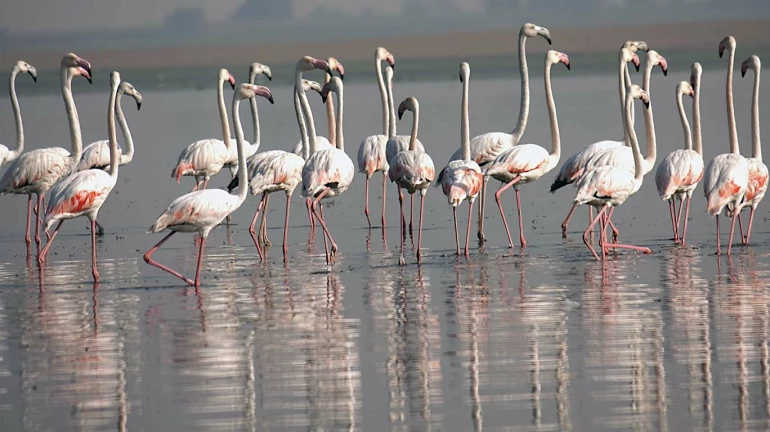
Wetlands are a part of a distinct ecosystem where land is primarily covered with water. Either salt or fresh or somewhere in between. Wetlands are a thing of concern as they support a high inhabitation of animals; mammals, birds, fish and other inter vertebrates.
On October 1, 2018, the United Nations declared that the worlds’ most economically valuable ecosystem, wetlands, are disappearing three times faster than the forests.
It is said that the bird species found in Mumbai are 20 per cent of the total bird species in the country. Mumbai, also known as the urban nest, alongside buildings and skyscrapers houses a variety of wetlands that makes it conducive for birds and biodiversity to thrive.
The pink-tinted flamingos have been making their way into the city for years now. Their primary diet is algae which are largely found in the sewage that flows into the wetlands. So, in an ironic way the pollution is making way for the flamingos to come to visit the city every year in November, experts deduce.
Mumbai Wetlands need our urgent attention
Wetlands across Sewri, Mahul and Thane creek witness a migration of The Curlew Sandpiper, Eurasian Oystercatcher and Bar-tailed every year although with the advent of global warming the number seems to be going down.
The grey-headed lapwing, a rare bird found in southeast Asia has been spotted in Thane creek several times, a sanctuary that is idealised by the flamingos. Similarly, Mallard, a duck species with a green head and a white ring on the neck have been spotted at the Lokhandwala lake many times.
Sporadic sightings of birds have always been a characteristic of the Mumbai wetland, something bird watchers have mentioned time and again. Bird watching even though a tricky exercise, nevertheless, can be useful as the observation of these birds during the months of December can give out factual trends.
Moreover, Mumbai’s mangroves provide shelter and feeding sites for many of these animal species. Mangrove forests grow in creeks, estuaries, bays and lagoons and in inter-tidal areas – an area between the high tide and the low tide. Maharashtra is the only state to have a dedicated cell-protecting its mangrove cover. The Vikhroli mangrove forest is one of the largest private mangrove forests in the country. More than 16 mangrove species, bird species, butterfly species, prawns, crabs and mammals like jackals, mongoose, wild boars, otters and leopards can be spotted in the mangrove ecosystem.
The biggest ecological asset is now in jeopardy
A 400-acre wetland in Navi Mumbai that was home to about 250 species of exotic birds, has now been turned into a massive concrete patch full of debris. Besides destroying the natural habitat for the birds, fishermen also claim that their livelihood has also been destroyed. It is imperative that we care for the wetlands because the dumping of wastes into them can pose to be a problem as these wetlands are environmentally important, ecologically sensitive and are natural habitats of migratory birds.
ALSO READ: Mumbai Environmentalists Begin Digital Agitation to Protest Destruction of Wetlands





